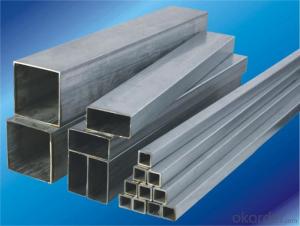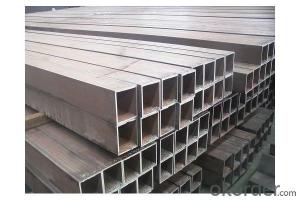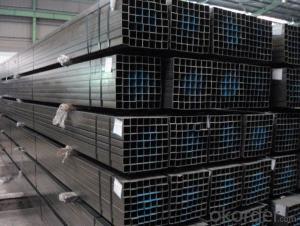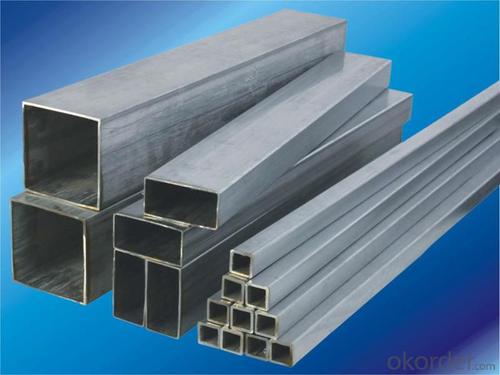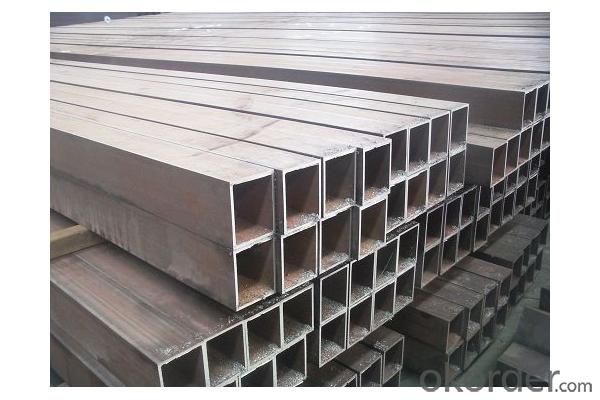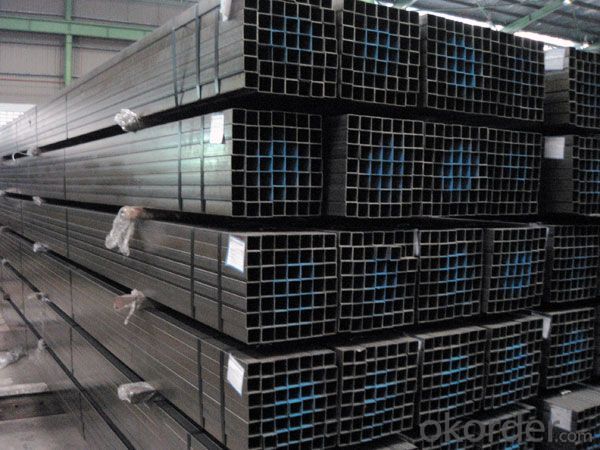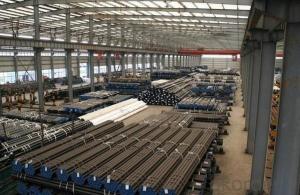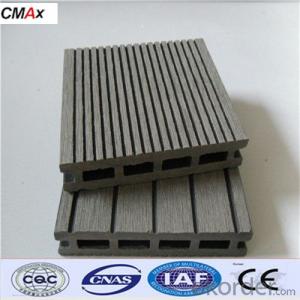Hollow Section with Different Specifications from CNBM
- Loading Port:
- Tianjin
- Payment Terms:
- TT or LC
- Min Order Qty:
- 100 m.t.
- Supply Capability:
- 3000 m.t./month
OKorder Service Pledge
OKorder Financial Service
You Might Also Like
1、Structure of Hollow Section Description:
Hollow section is a type of metal profile with a hollow tubular cross section. Hollow section, especially rectangular sections, are commonly used in welded steel frames where members experience loading in multiple directions. Square and circular hollow section have very efficient shapes for this multiple-axis loading as they have uniform geometry along two or more cross-sectional axes, and thus uniform strength characteristics. This makes them good choices for columns. They also have excellent resistance to torsion. Hollow section can also be used as beams, although wide flange or I-beam shapes are in many cases a more efficient structural shape for this application. However, the hollow section has superior resistance to lateral torsional buckling.
2、Main Features of the Hollow Section:
• High manufacturing accuracy
• High strength
• Small inertia resistance
• Strong heat dissipation ability
• Good visual effect
•Reasonable price
3、Hollow Section with Different Specifications Images:
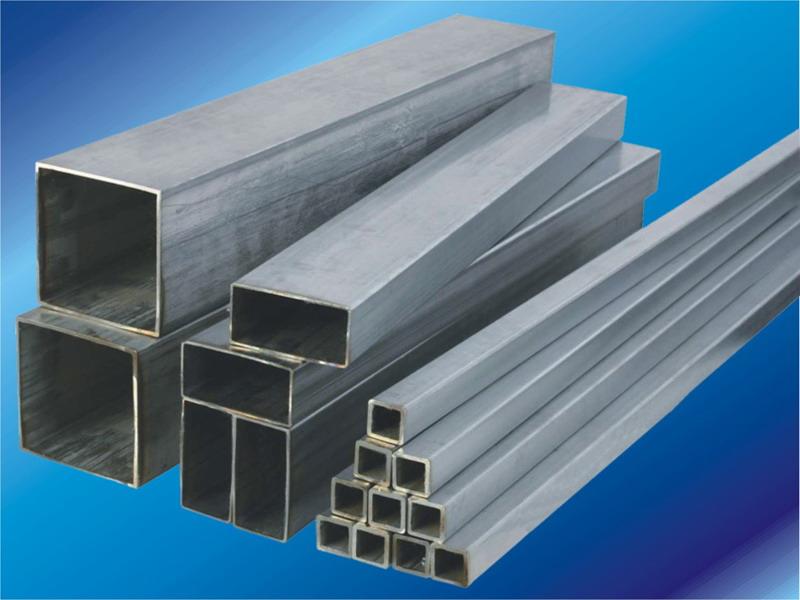
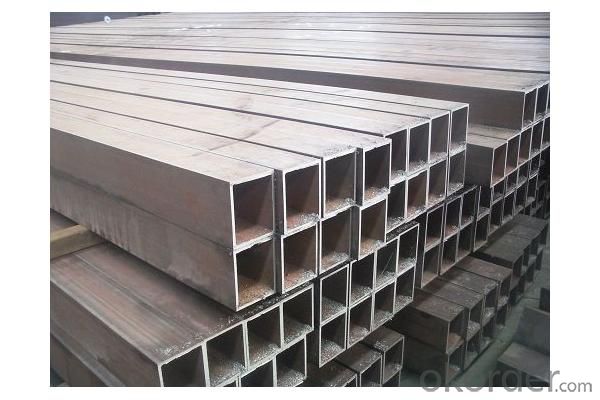
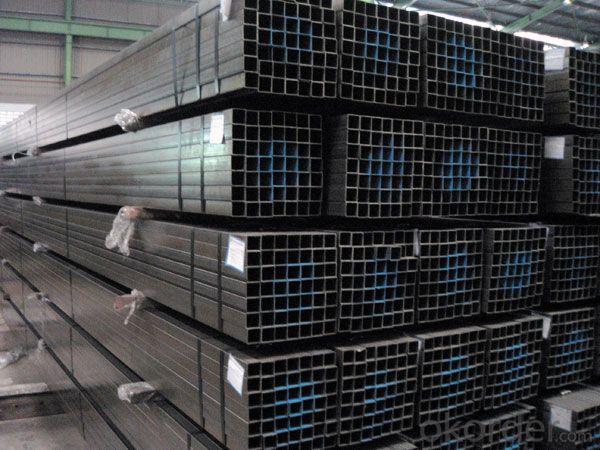
4、Hollow Section Specifications:
Standard: | JIS, GB, DIN, ASTM JIS G3445-2006, JIS G3444-2006, JIS G3446-2004, JIS G3441, GB/T 8163-1999, GB/T 8162-1999, DIN EN 10216-1-2004, DIN EN 10217-1-2005, DIN EN 10305, ASTM A106-2006, ASTM A53-2007, ASTM A789-2001, ANSI A213-2001, ASTM A179-1990 |
Grade: | 10#-45#, Cr-Mo alloy, Mo 10#, 20#, 45#, 15CrMo, 12CrMo, 13CrMo44, 12CrMo195, 16Mo, 16mo3 |
Thickness: | 1 - 50 mm |
Section Shape: | Square |
Outer Diameter: | 15*15---80*80 |
Place of Origin: | Shandong, China (Mainland) |
Secondary Or Not: | Non-secondary |
Application: | Structure Pipe |
Technique: | Hot Rolled |
Surface Treatment: | Copper Coated |
| Certification: | API |
| Special Pipe: | Thick Wall Pipe |
Alloy Or Not: | Non-alloy |
authentication:CANS CNAB IAF PAC CEC
5、FAQ of Hollow Sections with Different Specifications:
①How to guarantee the quality of the products?
We have established the international advanced quality management system,every link from raw material to final product we have strict quality test;We resolutely put an end to unqualified products flowing into the market. At the same time, we will provide necessary follow-up service assurance.
②How long can we receive the product after purchase?
In the purchase of product within three working days, We will arrange the factory delivery as soon as possible. The pecific time of receiving is related to the state and position of customers.
③ How can we get more information?
You can contact us by Email or call us directly and we will do our best to give you valuable information as much as possible but this service is not available on weekends.
- Q: Can steel pipes be used for oil and gas pipelines?
- Yes, steel pipes can be used for oil and gas pipelines. Steel pipes are commonly used in the oil and gas industry due to their strength, durability, and resistance to corrosion. They can withstand high pressure and extreme temperatures, making them suitable for transporting oil and gas over long distances.
- Q: What are the different types of steel pipe coatings for nuclear power plants?
- There are several types of steel pipe coatings used in nuclear power plants, including epoxy coatings, polyethylene coatings, fusion bonded epoxy coatings, and coal tar enamel coatings. These coatings are applied to steel pipes to provide protection against corrosion, enhance durability, and maintain the integrity of the pipes in the demanding environment of nuclear power plants.
- Q: How are steel pipes used in natural gas processing plants?
- Steel pipes are used in natural gas processing plants to transport and distribute natural gas from one point to another within the facility. These pipes are capable of withstanding high pressure and temperature, ensuring the safe and efficient flow of the gas throughout the plant. Additionally, steel pipes are resistant to corrosion, which is crucial as natural gas can be corrosive. They are also used for connecting various equipment and components in the processing plant, allowing for the smooth operation of the entire system.
- Q: What are the different types of steel pipe supports for thermal expansion?
- There are several types of steel pipe supports for thermal expansion, including fixed supports, sliding supports, and variable spring supports. Fixed supports are rigid and do not allow for movement, while sliding supports allow for limited axial movement. Variable spring supports use mechanical springs to accommodate thermal expansion and contraction, providing continuous support while allowing for movement.
- Q: How are steel pipes used in the manufacturing of chemical storage tanks?
- Steel pipes are commonly used in the manufacturing of chemical storage tanks as they provide structural support and serve as conduits for the transportation of chemicals. These pipes are typically used for connecting various components of the tank, such as the inlet and outlet valves, as well as for creating the internal plumbing system. The durability and corrosion resistance of steel make it an ideal material for ensuring the integrity and longevity of chemical storage tanks.
- Q: What are the different methods of inspecting steel pipes?
- There are several methods of inspecting steel pipes, including visual inspection, ultrasonic testing, magnetic particle testing, dye penetrant testing, radiographic testing, and eddy current testing.
- Q: What is the meaning of "DN" and "Phi" in the dimensioning of steel pipe diameter and how to apply the mark?
- DN is a kind of Engineering path, not the actual value, due to the different standards, so the actual corresponding values is not the same; phi is refers to the actual value, the same national standard pipe inside the steel pipe, the actual value is the same, for example, GB/T8163 and GB GB fluid pipe spiral pipe and GBT/T9711.1 GB/T12459 the same nominal diameter corresponding to the actual value is the same as the actual value; and American Standard steel standard ANSI B 16.38 and ANSI B 16.9 standard American Standard fitting the same nominal correspondence is the same. If marked, the nominal diameter should be added DN, and the actual value can be omitted.
- Q: What are the advantages of PVC pipe and galvanized steel pipe?
- The steel plastic composite pipe is a product made of two different materials, steel and plastic, and the coefficient of linear expansion between them is quite different. The company is using a new plastic special plastic steel plastic composite pipe company and Nanjing University jointly developed, the polyethylene matrix, adding more than twenty kinds of new materials inside, greatly reduce the plastic coefficient of linear expansion, so as to ensure the steel and plastic composite materials in the reliability of the.
- Q: What is the fire rating of steel pipes?
- The fire rating of steel pipes depends on several factors. Steel is inherently fire-resistant due to its high melting point and low thermal conductivity. However, the fire rating of steel pipes can be further enhanced through the use of fire-resistant coatings or insulation materials. These additional measures can provide varying degrees of fire protection, typically measured in terms of the duration the pipes can maintain their structural integrity in a fire scenario. The specific fire rating of steel pipes can vary depending on the thickness and type of coating or insulation used. It is important to consult industry standards, such as those set by organizations like the National Fire Protection Association (NFPA), or consult with fire safety professionals to determine the appropriate fire rating requirements for specific applications.
- Q: How are steel pipes coated for underground applications?
- Steel pipes are typically coated for underground applications using a process known as external coating or corrosion protection. This involves applying a layer of protective material, such as epoxy or polyethylene, onto the surface of the steel pipe. The coating acts as a barrier, preventing the pipe from coming into contact with moisture, soil, and other corrosive elements that could lead to degradation over time. Additionally, before applying the coating, the steel pipes are often cleaned and prepared through processes like sandblasting or shot blasting to remove any impurities and create a smooth surface for better adhesion of the protective coating.
Send your message to us
Hollow Section with Different Specifications from CNBM
- Loading Port:
- Tianjin
- Payment Terms:
- TT or LC
- Min Order Qty:
- 100 m.t.
- Supply Capability:
- 3000 m.t./month
OKorder Service Pledge
OKorder Financial Service
Similar products
Hot products
Hot Searches
Related keywords
